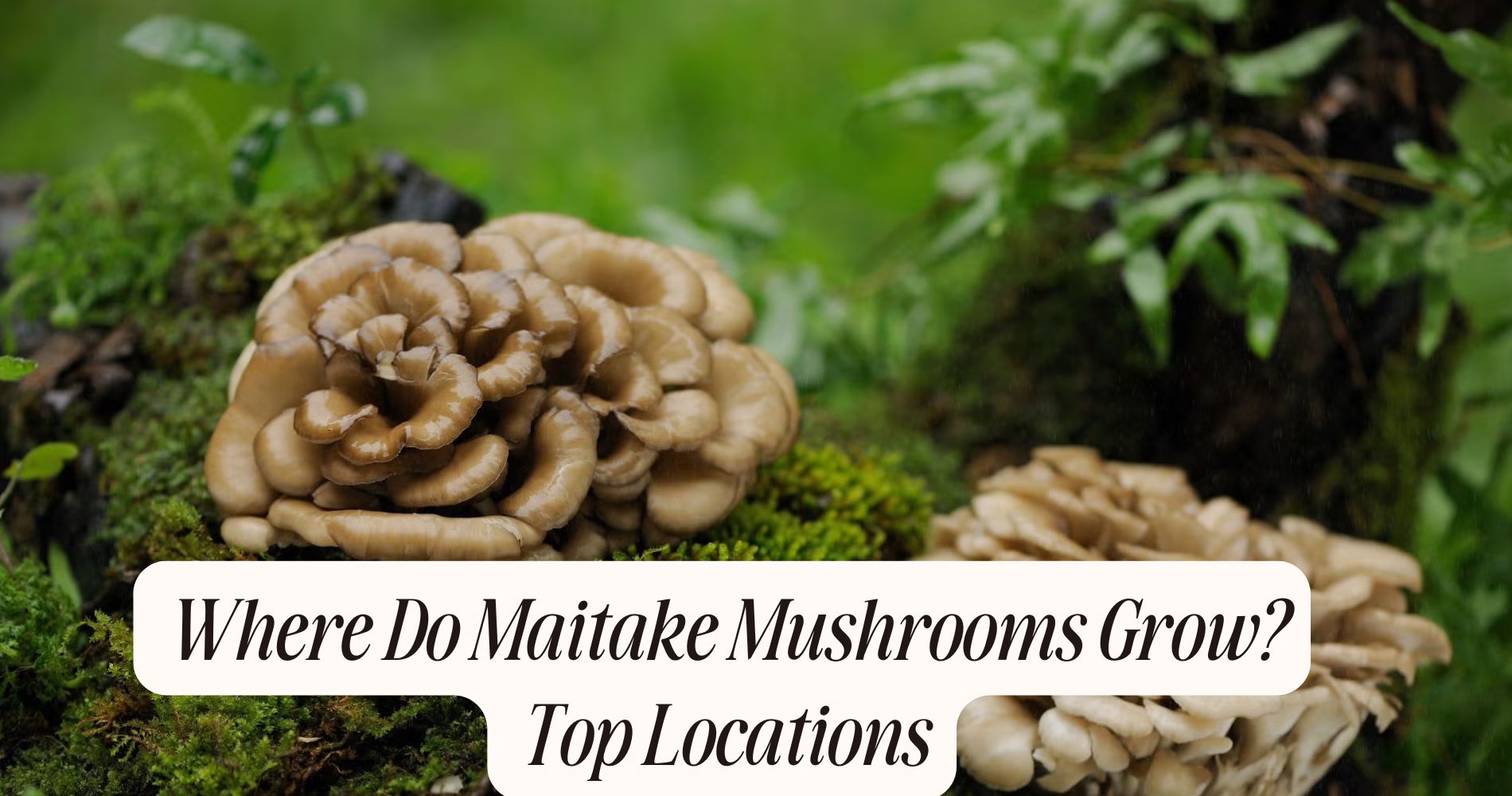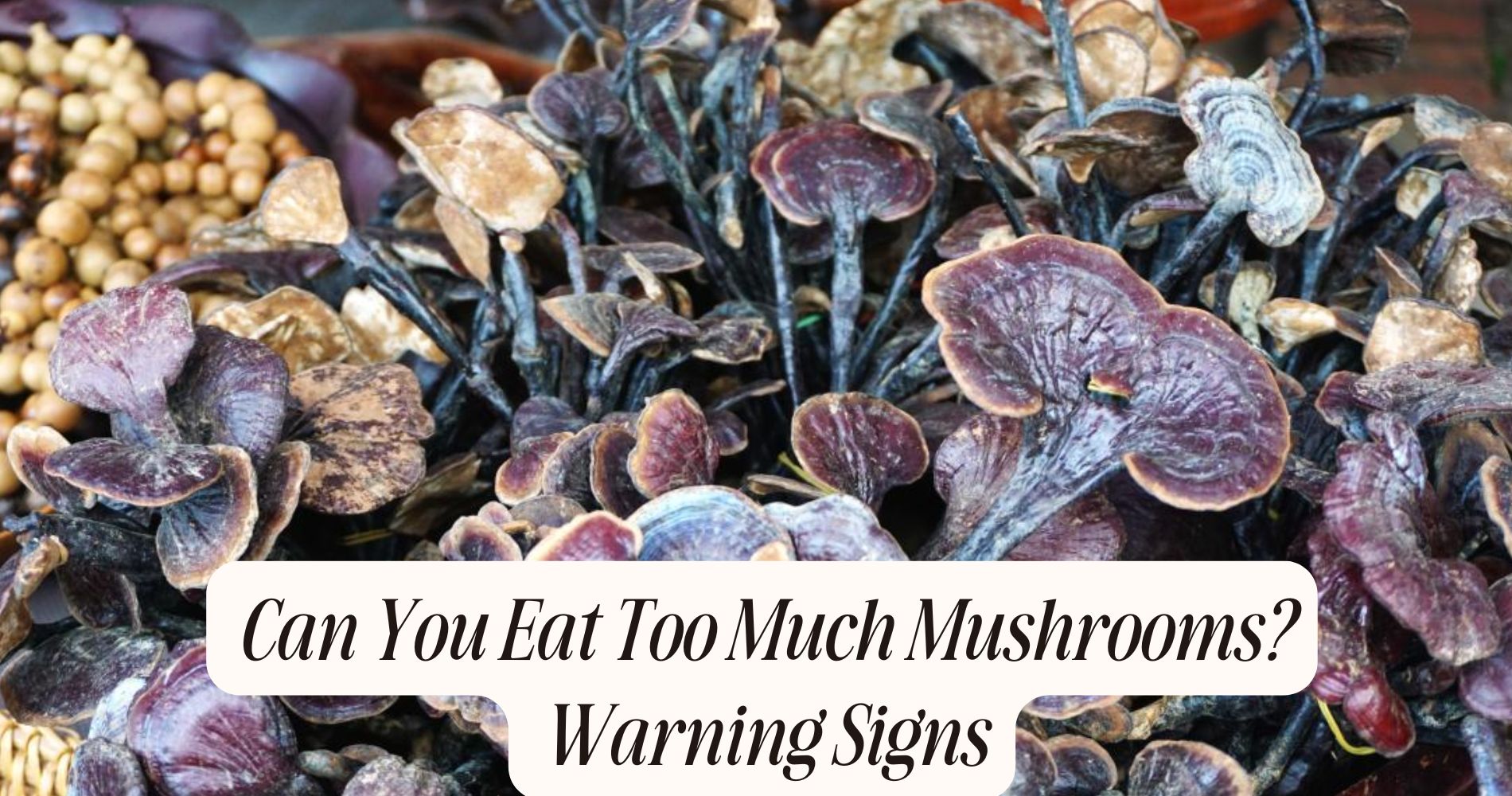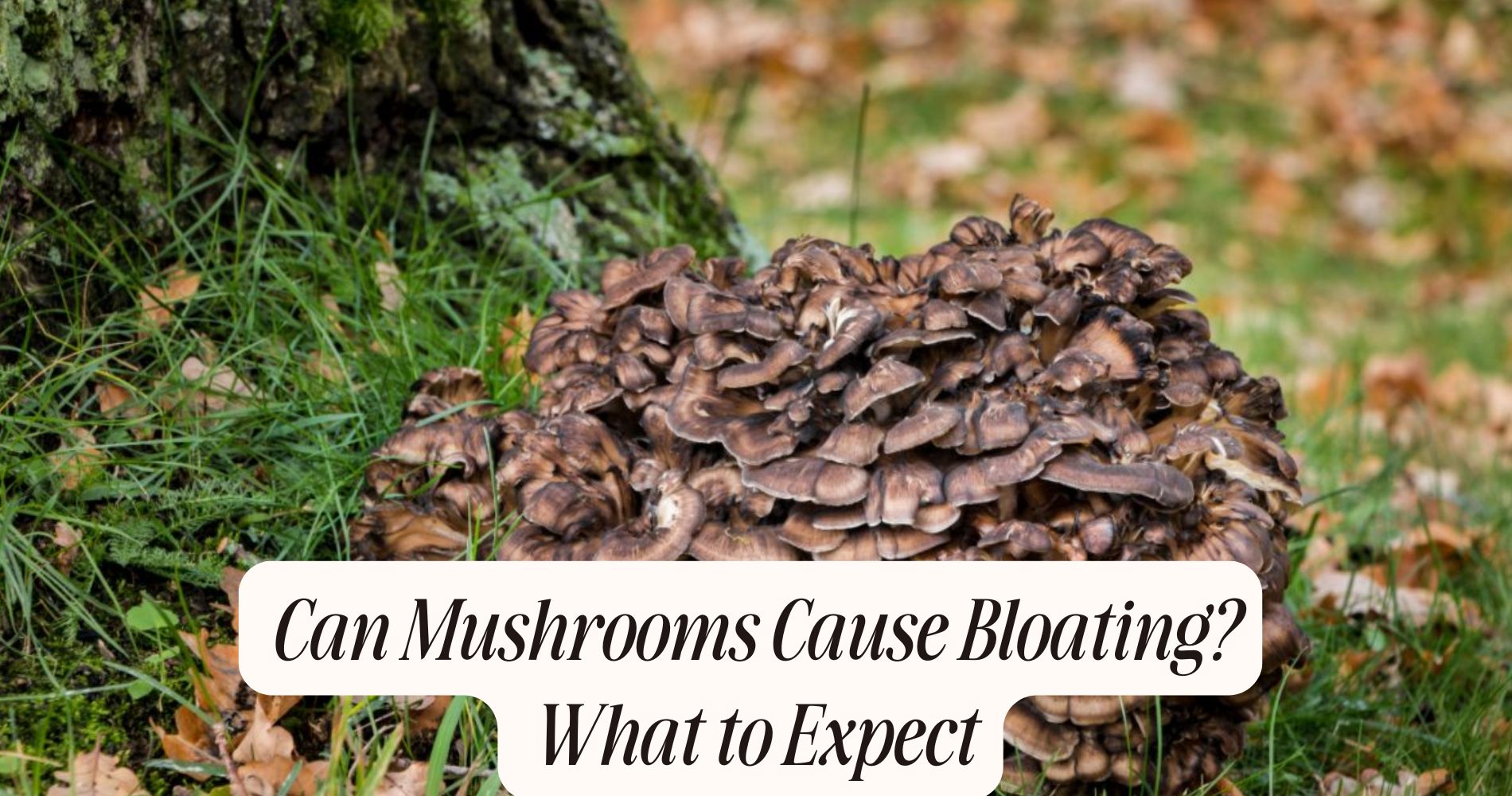
Where Do Maitake Mushrooms Grow? Top Locations
Where do maitake mushrooms grow? You’ll find maitake mushrooms (Grifola frondosa) thriving at the base of mature hardwoods—especially Quercus (oak), Fagus (beech), and Castanea (chestnut). These fungi flourish in humid, shaded environments with stable temperatures, favoring temperate forests in eastern North America, Japan, China, and parts of Eastern Europe. Look for overlapping, gray-brown fruiting bodies near decaying stumps or buttress roots. If you’re searching for exact microhabitats and regional hotspots, there’s much more to uncover.
Ideal Climate Conditions for Maitake Mushrooms
Although maitake mushrooms (Grifola frondosa) demonstrate adaptability across various temperate regions, they thrive in climates with consistent humidity, moderate rainfall, and temperatures ranging from 12°C to 24°C. When you select an ideal environment, you’ll notice these polypore fungi favor forested ecosystems where microclimates support high moisture retention.
Detailed cultivation techniques require you to monitor relative humidity around 85–90%, as excessive dryness inhibits fruiting body development. You should also avoid temperature fluctuations, since stable conditions enhance mycelial colonization and maximize yields.

Such environmental specificity not only supports vigorous growth but also preserves the bioactive beta-glucans responsible for maitake’s renowned medicinal benefits. By replicating these parameters, whether in controlled indoor systems or shaded woodland patches, you’ll maximize both the harvest quality and therapeutic value of Grifola frondosa.
Common Tree Hosts for Maitake Growth
Because Grifola frondosa exhibits a strong preference for hardwood hosts, you’ll most often encounter maitake at the base of mature Quercus species, particularly white oak (Quercus alba) and red oak (Quercus rubra).
Within deciduous forests, these ectomycorrhizal fungi display a marked affinity for established hardwood trees, capitalizing on the lignin-rich substrate and decaying root systems.
While oaks serve as the primary hosts, you shouldn’t overlook other genera such as Acer (maple), Castanea (chestnut), and occasionally Fagus (beech), though these are less common.
Maitake’s saprotrophic tendencies mean you’ll find fruiting bodies at the buttress roots or on decomposing stumps, not on live wood.
Precise host identification in these hardwood-dominated ecosystems increases your chances of successful foraging in suitable habitats.
Regional Hotspots in North America
While Grifola frondosa exhibits a wide distribution across temperate hardwood forests, its highest concentrations in North America occur throughout the eastern United States and southeastern Canada. You’ll find this polypore fungus thriving in forest ecosystems dominated by mature Quercus, Acer, and Fagus species, particularly in regions such as the Appalachian Mountains, the Great Lakes basin, and New England.
Maitake favors decaying stumps and the bases of living hardwoods, often forming substantial fruiting bodies at the root flare. When employing mushroom foraging techniques, focus on undisturbed, shaded woodlands with rich organic litter and moderate soil moisture.

Recognize the importance of tree age and forest health, as Grifola frondosa prefers older, established stands. Accurate identification and sustainable harvesting are essential for maintaining these delicate populations.
Notable Locations in Asia and Europe
Beyond North America, Grifola frondosa demonstrates significant presence throughout temperate regions of Asia and Europe, particularly in Japan, China, and broad swaths of Central and Eastern Europe.
You’ll find this basidiomycete thriving at the base of mature hardwoods—especially Quercus (oak), Fagus (beech), and Castanea (chestnut)—where it forms large, clustered fruiting bodies.

In Japan, maitake has become a cornerstone of both traditional foraging and commercial cultivation techniques, with controlled environments optimizing humidity and substrate for maximal yield.
China’s forestry regions also support significant wild populations, though increased interest in culinary uses has driven expansion of indoor cultivation.
Across Europe, particularly Poland and Germany, you’ll encounter wild specimens in mixed deciduous forests, fueling both mycological research and gastronomic innovation with this sought-after fungus.
Tips for Locating Maitake in the Wild
If you want to identify Grifola frondosa in its natural habitat, focus your search at the base of mature hardwoods—preferably Quercus spp. (oak), Fagus spp. (beech), and Castanea spp. (chestnut)—during late summer through early autumn.
Use systematic foraging techniques by scanning the root flare and examining decaying stumps, as maitake prefers lignicolous growth on living or recently dead trees. Observe for overlapping, fan-shaped basidiocarps with gray-brown pilei, distinguishing them from polypores like Meripilus giganteus.
Prioritize accuracy in mushroom identification by noting pore size, spore print color (white), and attachment to the substrate. Don’t overlook microhabitat specifics—moist, shaded forest floors yield higher probability.
With taxonomic precision, you’ll improve your success rate while minimizing misidentification risks in the wild.
Experience the Power of 10 Mushrooms in One Delicious Bite
If you love the natural benefits of maitake and other functional mushrooms, you'll want to try SUPER MUSHROOM GUMMIES by Well Gummies. These vegan, chewable supplements pack the power of 10 different mushrooms—including maitake, lion’s mane, and reishi—into one convenient, candy-like bite. Designed to support energy, focus, and immune health, each gummy is infused with wild berry flavor that’s as tasty as it is effective. No jitters, no crash—just smoother days and a clearer mind. Add them to your routine and feel the difference.
Frequently Asked Questions
Are Maitake Mushrooms Safe to Eat Raw?
You shouldn't eat edible varieties of Grifola frondosa, the maitake mushroom, raw. Consuming them uncooked increases the risk of gastrointestinal discomfort and potential mushroom poisoning. Always cook this polypore fungus, regardless of its specific habitat or taxonomy.
How Can You Distinguish Maitake From Lookalike Species?
You’ll use mushroom identification by examining Grifola frondosa’s clustered, overlapping, gray-brown fronds, white pore surface, and growth at oak bases. Carefully compare with lookalike species like Meripilus sumstinei, which displays darker bruising and differing spore print.
What Is the Best Season for Harvesting Maitake Mushrooms?
You'll find Grifola frondosa, or maitake, most abundant for wild mushroom foraging from late summer through early autumn. Prioritize sustainable harvesting methods by targeting mature basidiocarps in deciduous hardwood forests, especially near Quercus and Acer species.
Can Maitake Mushrooms Be Cultivated at Home?
You can successfully pursue home cultivation of maitake (Grifola frondosa) using specialized mushroom growing kits. Replicate their natural habitat by maintaining high humidity, stable temperatures (15–20°C), and hardwood substrate to encourage ideal basidiocarp development and fructification.
What Are the Health Benefits of Maitake Mushrooms?
You’ll benefit from maitake mushrooms’ medicinal properties, including immune modulation and glycemic regulation. With culinary uses spanning Grifola frondosa’s rich umami profile, you’ll find this Basidiomycota species confers both nutritional and therapeutic value in its hardwood forest habitat.
Conclusion
When you’re searching for Grifola frondosa, focus on mature hardwood forests, especially those dominated by Quercus species. This saprophytic fungus requires temperate, humid environments and typically colonizes the bases of living or decaying oak trees. North American hotspots include the eastern United States, while in Asia, you’ll find them in Japan and China. By targeting these specific habitats and tree hosts, you’ll maximize your chances of successfully locating wild maitake mushrooms.




